Related Research Articles
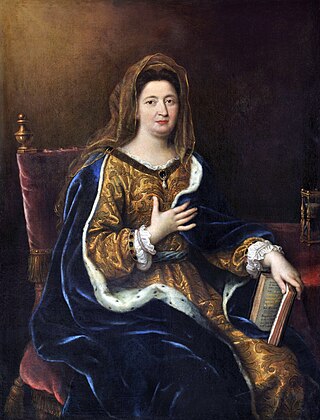
Françoise d'Aubigné, known first as Madame Scarron and subsequently as Madame de Maintenon, was a French noblewoman who secretly married King Louis XIV. Although she was never considered queen of France, she was one of the King's closest advisers and the royal children's governess. In 1686, she founded the Maison royale de Saint-Louis, a school for girls from poorer noble families.
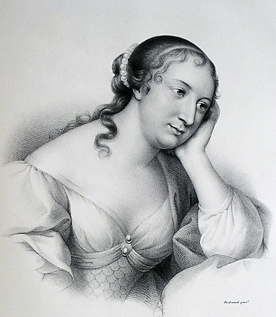
Marie-Madeleine Pioche de La Vergne, Comtesse de La Fayette, better known as Madame de La Fayette, was a French writer; she authored La Princesse de Clèves, France's first historical novel and one of the earliest novels in literature.

Françoise-Athénaïs de Rochechouart de Mortemart, Marquise of Montespan was the most celebrated maîtresse-en-titre of King Louis XIV, by whom she had seven children.

Marie de Rabutin-Chantal, marquise de Sévigné, also widely known as Madame de Sévigné or Mme de Sévigné, was a French aristocrat, remembered for her letter-writing. Most of her letters, celebrated for their wit and vividness, were addressed to her daughter, Françoise-Marguerite de Sévigné. She is revered in France as one of the great icons of French 17th-century literature.

Françoise Louise de La Vallière, Duchess of La Vallière andVaujours, born Françoise Louise de La Baume Le Blanc de La Vallière, Mademoiselle de La Vallière was a French noblewoman and the first mistress of Louis XIV of France from 1661 to 1667. She was created suo jure Duchess of La Vallière and Duchess of Vaujours. After leaving the royal court, Louise dedicated her life to religion, becoming a nun in 1674.

Maria Theresa of Spain was Queen of France from 1660 to 1683 as the wife of King Louis XIV. She was born an Infanta of Spain and Portugal as the daughter of King Philip IV and Elisabeth of France, and was also an Archduchess of Austria as a member of the Spanish branch of the House of Habsburg.
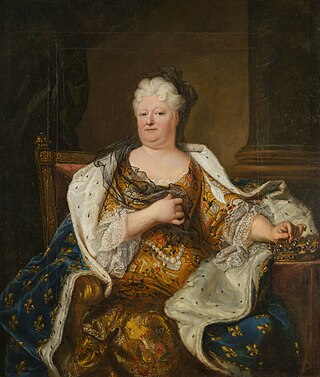
Princess Elizabeth Charlotte of the Palatinate, ; known as Liselotte von der Pfalz, 27 May 1652 – 8 December 1722) was a German member of the House of Wittelsbach and, as Madame, the second wife of Philippe I, Duke of Orléans, and mother of Philippe II, Duke of Orléans, France's ruler during the Regency. She gained literary and historical importance primarily through preservation of her correspondence, which is of great cultural and historical value due to her sometimes very blunt descriptions of French court life and is today one of the best-known German-language texts of the Baroque period.

Marie Adélaïde of Savoy was the wife of Louis, Dauphin of France, Duke of Burgundy. She was the eldest daughter of Victor Amadeus II, Duke of Savoy, and of Anne Marie d'Orléans. Her betrothal to the Duke of Burgundy in June 1696 was part of the Treaty of Turin, signed on 29 August 1696. She was the mother of the future King Louis XV of France. Styled as Duchess of Burgundy after her marriage, she became Dauphine of France upon the death of her father-in-law, Le Grand Dauphin, in 1711. She died of measles in 1712, followed by her husband a week later.
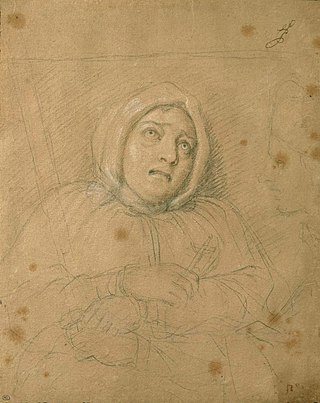
Marie-Madeleine d'Aubray, Marquise de Brinvilliers was a French aristocrat who was accused and convicted of murdering her father and two of her brothers in order to inherit their estates. After her death, there was speculation that she poisoned upwards of 30 sick people in hospitals to test out her poisons, but these rumors were never confirmed. Her alleged crimes were discovered after the death of her lover and co-conspirator, Captain Godin de Sainte-Croix, who saved letters detailing dealings of poisonings between the two. After being arrested, she was tortured, forced to confess, and finally executed. Her trial and death spawned the onset of the Affair of the Poisons, a major scandal during the reign of Louis XIV accusing aristocrats of practicing witchcraft and poisoning people. Components of her life have been adapted into various different mediums including: short stories, poems, and songs to name a few.

Charlotte de La Motte Houdancourt, Duchess of Ventadour was a French office holder of the French Royal Court. She was the governess of King Louis XV of France, great-grandson of King Louis XIV. She is credited with saving Louis XV from the ministrations of the royal doctors when he was ill as a child. She was the Gouvernante des enfants royaux, Governess of the Children of France like her mother, granddaughter, granddaughter in law and great grand daughter.

Marie Angélique de Scorailles was a French noblewoman and one of the many mistresses of Louis XIV. A lady-in-waiting to his sister-in-law Elizabeth Charlotte, Princess Palatine, the Duchess of Orléans, she caught the attention of the Sun King and began an affair with him in 1679. She died two years later, most probably as a result of complications arising from childbirth.

The Château de Clagny was a French country house that stood northeast of the Château de Versailles; it was designed by Jules Hardouin-Mansart for Madame de Montespan between 1674 and 1680. Although among the most important of the private residences designed by this great architect, it was demolished in 1769 after years of neglect.
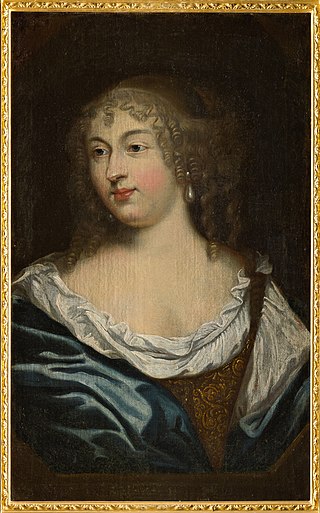
Françoise-Marguerite de Sévigné, comtesse de Grignan, was a French aristocrat, remembered for the letters that her mother, Madame de Sévigné, wrote to her.

Françoise Marie de Bourbon was the youngest illegitimate daughter of King Louis XIV of France and his maîtresse-en-titre, Françoise-Athénaïs de Rochechouart, Marquise de Montespan. At the age of 14, she married her first cousin Philippe d'Orléans, the future regent of France during the minority of Louis XV. Through two of her eight children, she became the ancestress of several of Europe's Roman Catholic monarchs of the 19th and 20th centuries—notably those of Belgium, Italy, Portugal, Spain, and France.

The Maison Royale de Saint-Louis was a boarding school for girls set up on 15 June 1686 at Saint-Cyr in France by king Louis XIV at the request of his second wife, Françoise d'Aubigné, Marquise de Maintenon, who wanted a school for girls from impoverished noble families. The establishment lost its leading role on the deaths of Louis and then Maintenon, but it nevertheless marked an evolution in female education under the Ancien Régime. Its notable students included Maintenon's niece Marthe-Marguerite Le Valois de Villette de Mursay, marquise de Caylus, and Napoleon's sister Elisa Bonaparte, grand duchess of Tuscany.

Françoise Charlotte Amable d'Aubigné, Duchess of Noailles was a French aristocrat, the wife of Adrien Maurice de Noailles, 3rd Duke of Noailles. She was the niece of Françoise d'Aubigné, Madame de Maintenon, and her heiress.

Anne de Richelieu née Poussard de Fors du Vigean (1622–1684) was a French court official. She served as Première dame d'honneur to the queen of France, Maria Theresa of Spain in 1671–1679 and to the dauphine Maria Anna Victoria of Bavaria in 1679–1684.
Marie Gigault de Bellefonds, Marquise de Villars,, was the wife of the French ambassador and is remembered for her reports that described palace intrigue at the Spanish Court of King Charles II between 1679 and 1681, specifically attempts to promote the standing of the French King Louis XIV in Spain.
Marie Françoise de Brancas (1650-1715), Princess of Harcourt and Marquise of Maubec, was a French aristocrat and courtier during the reign of Louis XIV. She was a lady-in-waiting to Queen Marie Thérèse and later became an intimate friend of Madame de Maintenon, the King's morganatic second wife.
References
- ↑ Diana De Marly (1987), Louis XIV & Versailles,
Much to Louis XIV's relief the French hairdresser Martin was able to save the reputation of the French court ... On 4 April 1671 the Marquise de Sevigne wrote to her daughter the Comtesse de Grignan that Madame Martin was...
- ↑ Louis Napolitan: Six Thousand Years of Hair Styling, Polygraphic Company of America, 1939
- ↑ Louis Napolitan: Six Thousand Years of Hair Styling, Polygraphic Company of America, 1939
- ↑ Gisèle d'. Assailly: Ages of Elegance: Five Thousand Years of Fashion and Frivolity, Hachette, 1968
- ↑ Wendy Cooper: Hair: sex, society, symbolism, Aldus, 1971
- ↑ Louis Napolitan: Six Thousand Years of Hair Styling, Polygraphic Company of America, 1939
- ↑ Mary Trasko: Daring Do's: A History of Extraordinary Hair, Random House Incorporated, 1994